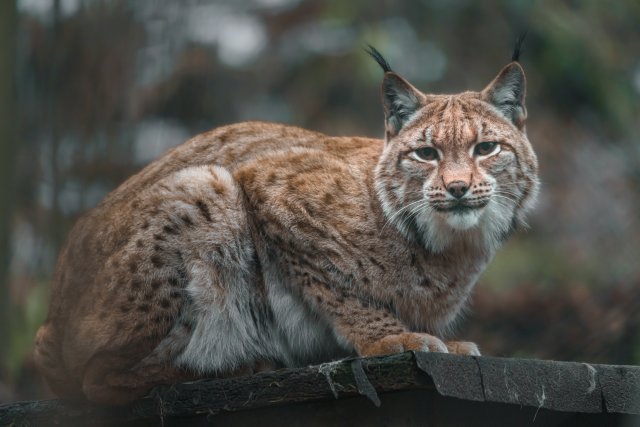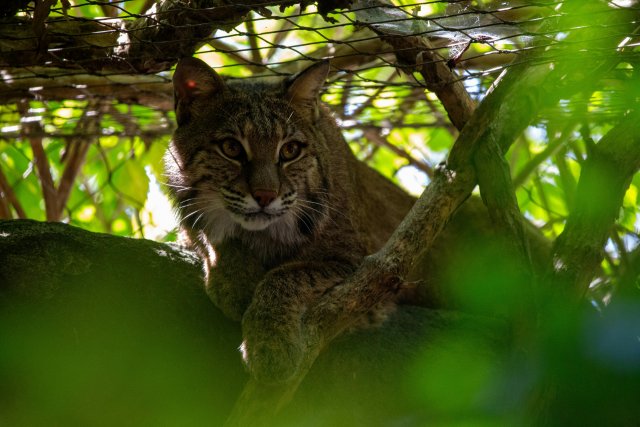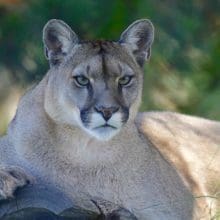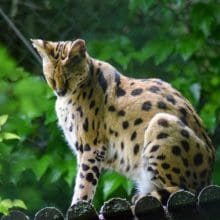5 Key Differences Between Eurasian Lynx and Bobcat
Eurasian Lynx and Bobcat
The Eurasian lynx and the bobcat are two species of wild cats that share some similarities but also have distinct differences. Understanding these differences can help us appreciate the unique characteristics of each species and their respective habitats. In this article, we will explore five key differences between the Eurasian lynx and the bobcat.
1. Geographic Distribution
The Eurasian lynx (Lynx lynx) is primarily found in Europe, Russia, and parts of Asia. It is the largest lynx species and has a wide range of habitats, including forests, mountains, and tundra. On the other hand, the bobcat (Lynx rufus) is native to North America, ranging from southern Canada to Mexico. It is adaptable to various environments, such as forests, deserts, and swamps.
Example: According to a study conducted by the University of California, the bobcat population in North America has been steadily increasing over the past decade, while the Eurasian lynx population has faced challenges due to habitat loss and hunting.
2. Lynx and Bobcat: Size and Physical Appearance
Lynx and Bobcat: The Eurasian lynx is larger than the bobcat, with males weighing between 40 to 66 pounds and females weighing between 30 to 48 pounds. It has a robust build, long legs, and tufted ears. The fur coloration varies depending on the region, ranging from pale gray to reddish-brown with distinct black spots. In contrast, the bobcat is smaller, with males weighing between 18 to 40 pounds and females weighing between 15 to 28 pounds. It has shorter legs and a shorter tail with a black tip. The fur coloration is generally tan or brown with dark spots or stripes.
Example: A research study conducted by the Wildlife Conservation Society found that the size difference between the Eurasian lynx and the bobcat is primarily influenced by their respective habitats and prey availability.
3. Hunting Behavior and Diet
The Eurasian lynx is a solitary hunter that primarily preys on ungulates such as deer, roe deer, and chamois. It is an ambush predator, relying on its excellent camouflage and stealth to approach its prey. The bobcat, on the other hand, has a more diverse diet that includes small mammals like rabbits, squirrels, and rodents. It is also known to hunt birds, reptiles, and even small deer. Unlike the Eurasian lynx, the bobcat is more adaptable and can adjust its hunting strategies based on the available prey.
Example: A study published in the Journal of Wildlife Management found that the hunting success rate of the Eurasian lynx is higher compared to the bobcat due to its larger size and specialized hunting techniques.
4. Vocalizations and Communication
Lynx and Bobcat: The Eurasian lynx has a wide range of vocalizations, including growls, hisses, and meows. It also produces a distinctive call known as “yowling” during the mating season. These vocalizations are used for communication between individuals and to establish territories. On the other hand, the bobcat is known for its unique vocalization called a “bobcat scream.” This loud, high-pitched sound is often heard during the breeding season and is believed to be a form of communication between males and females.
Example: A study conducted by the University of Minnesota found that the vocalizations of the Eurasian lynx and the bobcat are influenced by their social structure and mating behaviors.
5. Conservation Status
The conservation status of the Eurasian lynx and the bobcat differs significantly. The Eurasian lynx is listed as a species of “Least Concern” by the International Union for Conservation of Nature (IUCN). Although some populations are declining due to habitat loss and hunting, overall, the species is considered stable. In contrast, the bobcat is also listed as a species of “Least Concern,” but some subspecies, such as the Florida panther, are endangered due to habitat fragmentation and human activities.
Example: According to the IUCN Red List, the Eurasian lynx population in Europe has been recovering in recent years due to conservation efforts and habitat restoration projects.
Summary
Lynx and Bobcat: In conclusion, the Eurasian lynx and the bobcat are two distinct species of wild cats with notable differences. The Eurasian lynx is larger, primarily found in Europe and Asia, and has a specialized hunting behavior. The bobcat, on the other hand, is smaller, native to North America, and has a more adaptable diet. Understanding these differences not only enhances our knowledge of these fascinating creatures but also highlights the importance of conservation efforts to protect their habitats and ensure their survival.
Read More About Bobcats From Wikipedia





